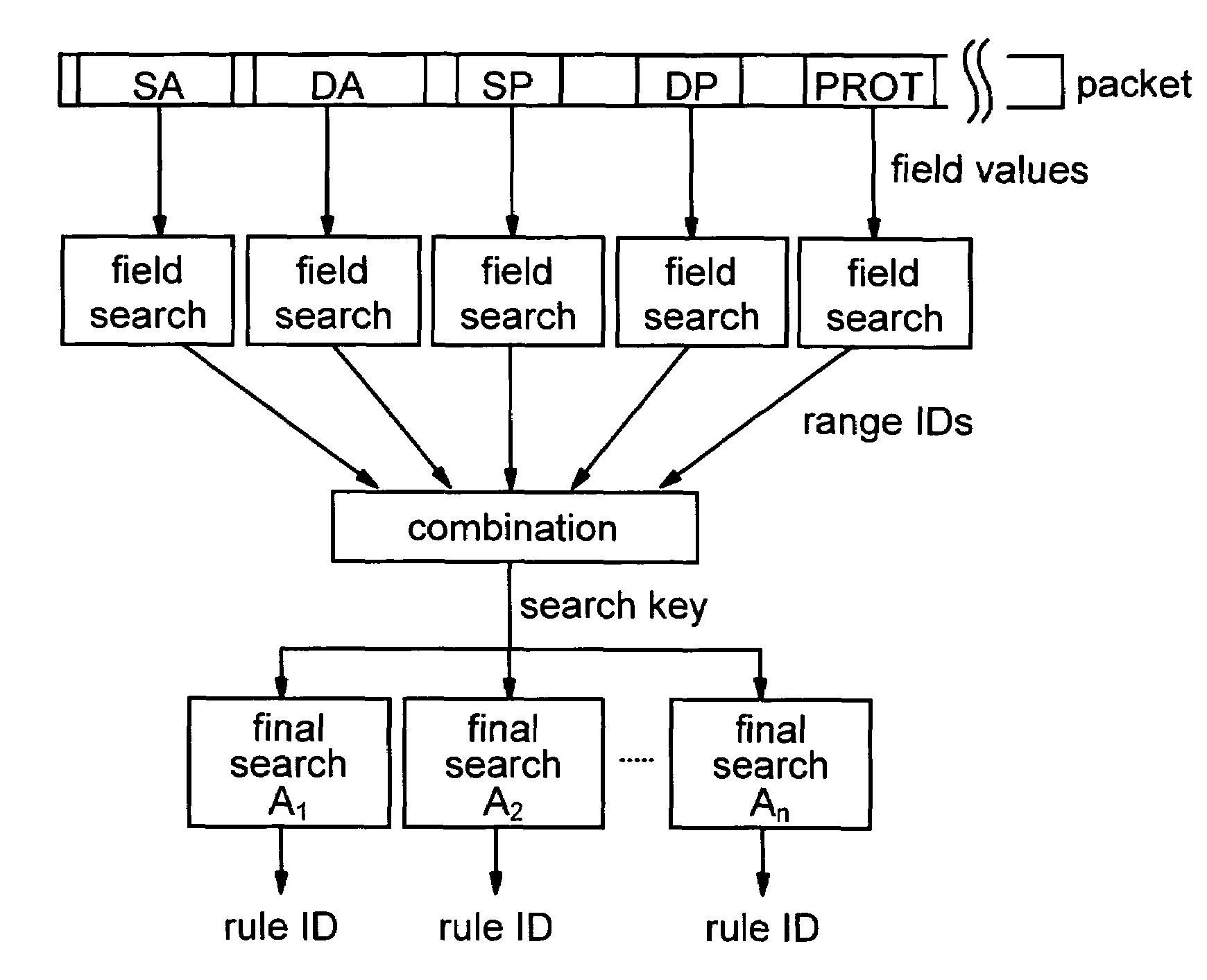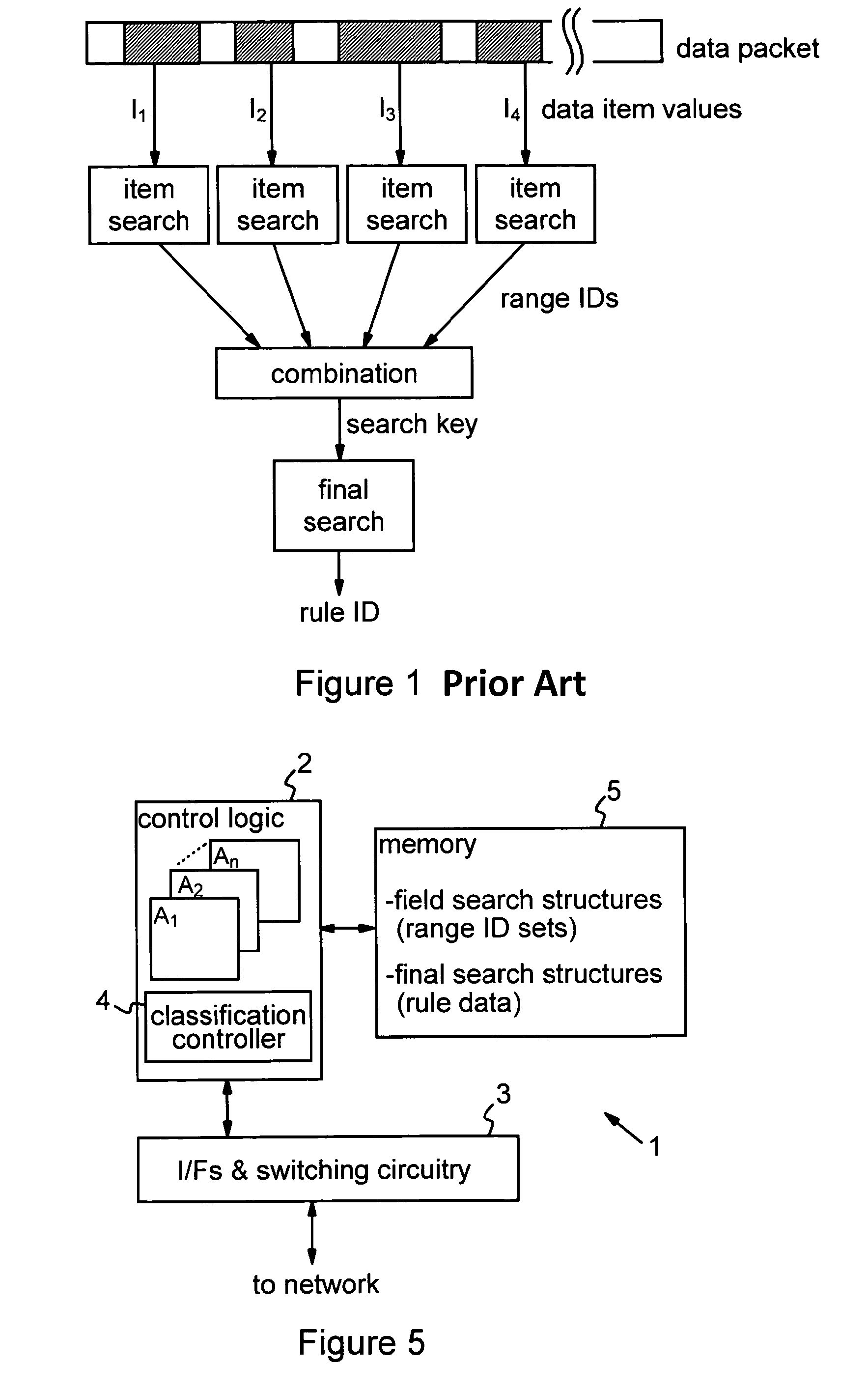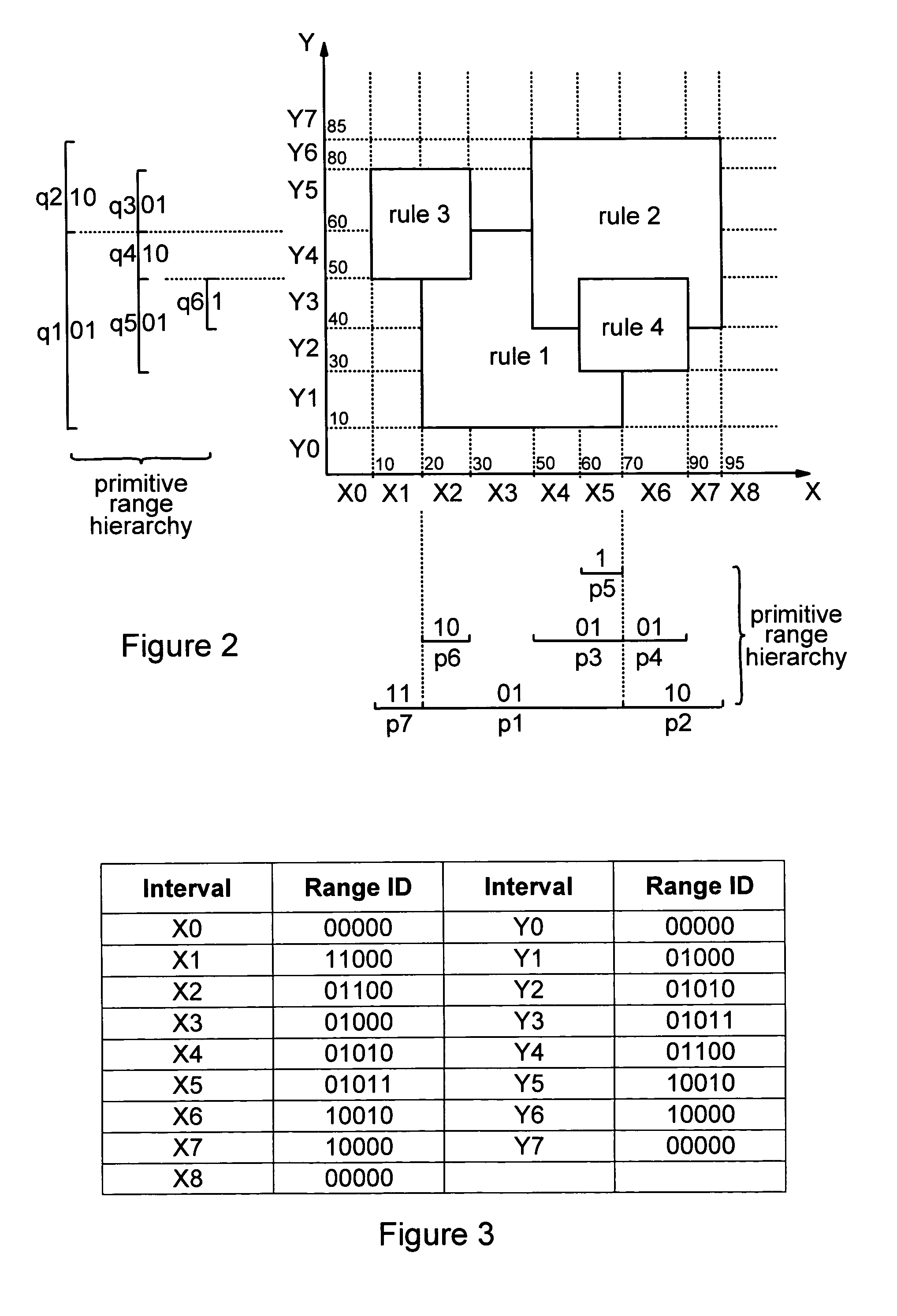Packet classification
a data packet and packet technology, applied in the field of packet classification, can solve the problems of significantly smaller storage capacity, difficult multi-field classification, and inability to keep sdram performance, and achieve the effect of reducing the amount of data to be stored overall and high efficiency
- Summary
- Abstract
- Description
- Claims
- Application Information
AI Technical Summary
Benefits of technology
Problems solved by technology
Method used
Image
Examples
Embodiment Construction
[0054]Before describing the preferred embodiments in detail, it is useful first to consider the operation of a basic multi-field packet classification process on which the embodiments to be described are based. FIG. 1 is a schematic representation of one example of a multi-field classification process of the category type discussed above. This example assumes packets are to be classified according to a rule set which requires evaluation of only four data items in the packet, represented by the shaded segments in the figure. Typically these data items will be respective fields of the packet header, though in general a given item may consist of any part of the packet and may contain data from one or more fields. First, the packet is parsed to identify the data item values in question, and the resulting values, here I1 to I4, are supplied as inputs to respective item searches. For each data item, the item search effectively selects a range identifier corresponding to the input item val...
PUM
 Login to View More
Login to View More Abstract
Description
Claims
Application Information
 Login to View More
Login to View More - R&D
- Intellectual Property
- Life Sciences
- Materials
- Tech Scout
- Unparalleled Data Quality
- Higher Quality Content
- 60% Fewer Hallucinations
Browse by: Latest US Patents, China's latest patents, Technical Efficacy Thesaurus, Application Domain, Technology Topic, Popular Technical Reports.
© 2025 PatSnap. All rights reserved.Legal|Privacy policy|Modern Slavery Act Transparency Statement|Sitemap|About US| Contact US: help@patsnap.com



